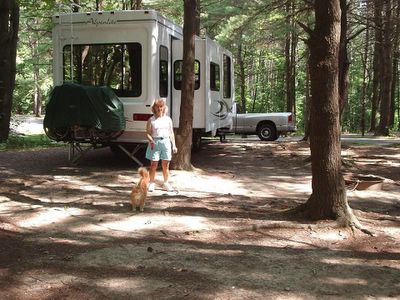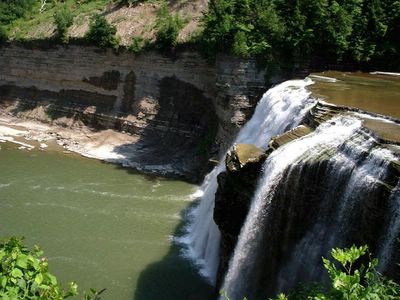
Our campsite is under a dense pine canopy.
It is a rustic one, with no water, sewer, and only 20 amps of electricity. We had to use our long fresh water hoses to fill the 100 gallon fresh water tank in the RV, and our Macerator System to empty the RV holding tanks. Here is how it works: the Macerator pump connects to the RV sewer outlet and pumps all onto our sewer tank on the truck bed. We then drive to the sewer dump a mile away and empty it directly by gravity from the truck bed.
Because of the remoteness and low altitude of the Canyon, we had to deploy our 32 foot external high gain cell antenna. Of course, our Satellite Internet or Television services were unusable. Luckily we still could connect to the Internet - slowly - with our cell phone.
This is not our favorite type of campsite.
It was unusually hot and muggy here in Northwest NY. Luckily we found that even on 20 amps our AC worked well as long as we removed all other major loads.
The CCC (Civilian Conservation Core), created by FD Roosvelt during the great depresion of the 1930's, planted these pine forests on vacant farmlands purchased for the park. The CCC helped feed and organize many million unemployed and hungry young men. We saw the menus and daily schedule. They ate four square meals a day and slept 8 hour a night. On this regime of ample good food, sleep and hard physical work, the average weight gain was 12 lbs in muscle during their work creating wonderful public parks and works all over the country. Part of their pay was theirs to keep and the rest was sent directly to their families.








